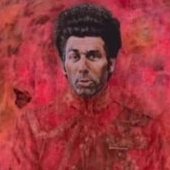Thai Alphabet Subjects
-
Recently Browsing 0 members
- No registered users viewing this page.
-
Topics
-
-
Popular Contributors
-
-
Latest posts...
-
565
The alarming mental decline of Donald J. Trump -- watch this space
I wonder if even his supporters believe in their hearts that he was not involved with a very young girls as he himself stated on multiple occasions. After all he and Epstein were very close for well over a decade, they were best friends and he spent countless visits to the mansion in addition to who knows how many visits to Orgy Island. And we do know that he's morally depraved. -
42
Retirement Extension? Nah, I’m DTV Now.
Same here and I agree. Consider myself fortunate not to have any medical conditions. Hence, no hospital appointments or regular medication. Studying doesn't interest me nor does paying for courses that I'm never going to attend. -
12
Had our first motorbike accident.... feel more Thai now
This is a good thing. Impatience on the road is a real killer Why?! Get a car already. -
77
Just happened to me.
Indeed, but why is that the case? Because of the emergence of toxic feminism as a power to mould laws, opinion and cultural agenda in the UK. That's the reason why women have become less feminine in the UK. There is a reason for it. And that reason is feminism. And of course the male enablers of feminism, one need only look at this thread. I often wondered how male politicians can swallow the feminist agenda so completely, but then one need only look at this talkboard and you see why. Now, if the reason is feminism and its enablers, it is already clear that in Thailand too in due course we will see women become less feminine. We're already seeing it. It's not penetrated mainstream so far. But it's here already. Several organizations in Thailand work towards feminist goals, including Pratthanadee Foundation, Good Shepherd Sisters Thailand, and the APSW (Association for the Promotion of the Status of Women), and many others. Buddhist nuns particularly have this agenda. Like you I hope Thailand will reject the introduction of Western ideas like feminism, but it does not seem that is the case. -
29
UK UK Moves to Lower Voting Age to 16 in Landmark Electoral Reform
The proposed changes to the election laws will include banning political foreign and crypto political donations. Who can argue that’s not a good thing. -
12
MRI. Why not from head to toe?
It's the follow-up procedures that will harm a certain percentage of people. Read and try to understand @Sheryl's post. BTW a MRI does do harm, especially if done with contrast. Gadolinium affects the kidneys, for example. Nice overview of side effects: https://www.ncbi.nlm.nih.gov/books/NBK482487/ MRIs are not toys, just 3 days ago, in NY, someone (not the patient) died. https://www.nytimes.com/2025/07/18/health/mri-death-long-island.html
-
-
Popular in The Pub




.thumb.jpeg.d2d19a66404642fd9ff62d6262fd153e.jpeg)









Recommended Posts
Create an account or sign in to comment
You need to be a member in order to leave a comment
Create an account
Sign up for a new account in our community. It's easy!
Register a new accountSign in
Already have an account? Sign in here.
Sign In Now